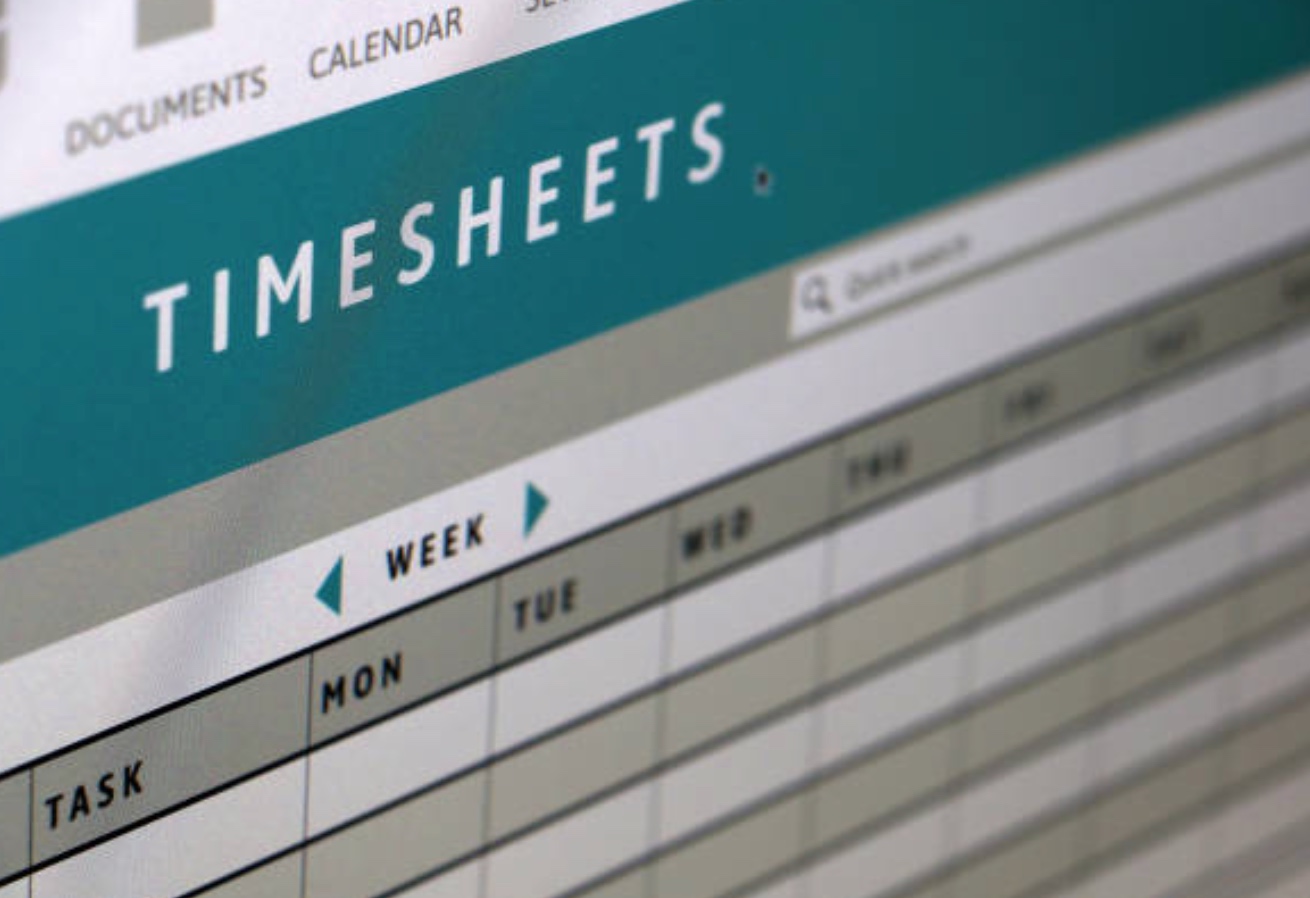Dashpivot article – Daily timesheet format
Timesheet format
Read on to understand the two most common types of timesheet formats, a daily timesheet format and a weekly timesheet format. You'll also find free resources which you can use for your own timesheets.

Daily timesheet format
Which timesheet frequency you choose will depend on a few factors which we will dive into, and regardless of which you choose, you will need a good timesheet format for capturing, storing and actioning your timesheets.
What is a Daily Timesheet and Why is it Important?
A Daily Timesheet is a document that is used to track the working hours of employees in different tasks, projects, or sites in a day. It is used to record essential details like the day, start and end times of the shift, breaks, type of task or work performed, and more. It’s an important tool crucial in maintaining precise and accurate records of employees’ hours. Furthermore, it’s essential for supervisors and managers to keep daily timesheet records and documents for project management, payroll processing, and analysis. Employees can monitor the work progress, employees are organised and fairly paid, and for compliance, it ensures that the workplace is in compliance with labour regulations. Daily timesheets is a document that provides valuable insights into resource allocation.
For employers, a daily timesheet serves as a valuable document in identifying delays and developing optimised workflows.
Daily timesheets entries can help employers determine root causes of delays, distribute the workloads, and estimate resource allocation for future projects. For employees, it helps them keep track of their working hours, stay accountable, gain insights with their time management habits, and know how to prioritise tasks and eliminate distractions.
Traditionally, a daily timesheet is paper-based, but more and more companies and businesses are using digital tools to streamline the entire processes, so organisations can focus more on fast documentation, project management, payroll processing, and analysis.
Overall, a daily timesheet fosters accountability in employees, ensures that they are paid with the hours they’ve worked, and serves as documentary proof that the employers adhere to the labour regulations.
What is the Purpose of a Daily Timesheet?
A daily timesheet provides detailed and accurate records of working time or hours of tasks, projects, and activities all throughout the day. It’s designed to track daily working hours and monitor daily progress in a site. It’s mainly known for calculating employee wages and accurately billing clients.
A daily timesheet plays an important role in project management. For example, in the construction industry, time is money and everything needs to be finished within the schedule and within the budget.
A daily timesheet enables teams, workers, contractors, and project managers to assess if the daily tasks are within the schedule and that deadlines are met. It contributes to accountability and overall productivity. For organisational success, a daily timesheet is a tool for time and resource management.
You can see a construction timesheet template used by thousands of construction workers here.
What are the Key Components of a Daily Timesheet Format?
Daily timesheets are commonly used by employers and managers across multiple industries to overall productivity in employee and resource allocation, and monitor timelines. It’s an essential tool to ensure that resources are allocated properly, so its contents should match the purpose of having a daily timesheet.
Typically, a daily timesheet has these generic data, which can be tailored to fit into different industries or types of uses.
Generally, for an individual, these are the key contents of a daily timesheet: (1) Date; (2) Employee Data; (3) Start and End Time; (4) Break; (5) Tasks and Description; (5) Project/Site Name; (6) Total Hours Worked, and; (7) Overtime. There may also be a section to include the equipment and materials used, notes, weather conditions, and lastly supervisory approvals.
These are the key and essential components in a daily timesheet. Organisations can tailor to fit how their daily timesheets look based on different industries and roles, like crew-based timesheets or project-specific timesheets, but these key components that should always be included.
What are the Common Types and Formats of a Daily Timesheet?
Daily timesheets have different types and designs depending on the needs of the organisation, industry, roles, and workflows. There might be specific requirements in a project or site, or there might be roles that need more information to be collected that others. Knowing the different types and designs of a daily timesheet can help organisations make their own daily timesheet form that makes data entry seamless, maintains data accuracy, aligns with the company goals, and improves overall efficiency.
Common Types of Daily Timesheets Format
A daily timesheet isn’t just limited for a single person’s or employee’s use, where each employee fills out their own daily timesheet and submit it to the supervisor or manager. There are also crew-based daily timesheets that are specifically designs to log the working hours of an entire team or crew rather than an individual worker. Still including the key components of a daily timesheet, the manager can use tables to log the hours of workers and another table, if necessary, to log work done by contractors, equipment, or other resource. There could also be project-specific timesheets are customised for specific projects like including specific contractor activities, milestones, and deliverables. They may include multiple tables with varying content and data.
These types of daily timesheets still serve their purpose of logging working hours and tasks, and maintain compliance with labour regulations.
Common Designs of Daily Timesheets
The traditional way of daily timesheets are paper-based timesheets where an actual physical daily timesheet document is being used on site to record working hours and tasks, and will be digitised later on. This method has been effective, but it is time-consuming. Digitising tons of daily timesheets from multiple sites or projects and teams every day will be a hassle. It’s better to use digital tools to make the process easier.
Another method would be by using Excel as the digital tool. As a digital tool, it is convenient and helpful. Managers can customise their daily timesheets by using the columns and rows in Excel and will manually input the data, and use formulas to automate calculations. However, a drawback from this is it is not readily accessible on site, and data isn’t automatically stored and synced for people in the office to view. It’s also bothersome to keep track of all Excel files, create a bunch of folders, make it difficult to search data you would need, and retrieve when they’re needed.
The best design for a daily timesheet is a digital tool like Dashpivot, that allows you to input data conveniently using your mobile phone or tablet on site, tailor the timesheet according to its type or use, and easily retrieve data from the database. Dashpivot offers automated calculations and easily integrations to other tools for advanced analytics. This information management software offers a seamless timesheet management and reduces the changes of errors and inefficiencies compared to the paper-based system.
Example timesheet format below

Use and customise this daily timesheet format for free
Why is a Weekly Timesheet Essential for Organisations?
A weekly timesheet is essential for organisations to track the working hours, progress, and tasks of employees in a structured and efficient way. This document is also used for payroll processing, compliance purposes, and project management simplification.
With a tool to use to detail the hours and activities, the management is able to manage resource allocation, cost control, and performance evaluation easily. A weekly timesheet fosters accountability and transparency in teams and among workers, ensuring that deadlines are met and projects stay on track.
What Factors Influence the Choice of a Specific Weekly Timesheet Format?
A weekly timesheet format varies depending on the intended use and role of the worker or workers using it. Below are some of the factors that influence their choice of format or structure of a weekly timesheet.
Using a Weekly Timesheet Format for Basic Hourly Tracking (Hourly/Salaried/Contractors)
When an organisation wishes to use a weekly timesheet to record the working hours of hourly and salaried workings, and contractors, the formatting includes clock-in and clock-out times, breaks, overtime tracking, task descriptions, or other relevant content.
Using a Weekly Timesheet for Payroll
If the weekly timesheet is also used for payroll processing, the contents could be similar to a basic hourly tracking timesheet with a section for manager approvals and columns for total regular pay and overtime pay.
For the purpose of project management, the weekly timesheet may be broken down by activity, including a summary of the total hours spent in a project. Depending on whether its contents also include the workers or contractors, the weekly timesheet may also contain billable and non-billable hours.
Using a Weekly Timesheet for Client Billing
If the weekly timesheet is used for client billing, the format features task descriptions, subtotalled hours per client or per project. This type of formatting ensures there is accurate invoicing for work done.
What are the Different Formats for Weekly Timesheets?
Printable Weekly Timesheets
Printable weekly timesheets are digital forms (like PDF or Word files) or physical papers that are used in the workplace or site. The digital forms can be printed out and distributed to be manually filled by the workers. It’s the traditional method implemented in some industries and small organisations. Physical papers can be bulky and time-consuming to fill out. Retrieving information for payroll processing, compliance needs, or productivity tracking.
Spreadsheets and Digital Tools
Spreadsheets and digital tools are able to include integration with multiple tools. These could be using Excel, Google Sheets, and timesheet software.
Spreadsheets can be customised for any use, and users can use formulas for automatic calculations. This makes it easier to calculate pays and billable items. Aside from automatic calculations, there are other useful features like columns and rows, drop down menus, and conditional formatting.
Digital tools, on the other hand, include advanced feature that include reporting, invoicing, and project management. It’s also a cloud-based access, especially useful for remote teams. One of the most excellent digital tools, especially helpful for the construction, engineering, and other field-based work types of industries, is Dashpivot. It provides features to create customisable forms and other features that make is easier to streamline tracking and reporting. It’s more flexible and efficient compared to the traditional printable weekly timesheets and spreadsheets.
How Do Digital Forms in Dashpivot Streamline Your Daily and Weekly Timesheet Format?
Dashpivot is an information management software that makes data entry for daily timesheets simple, easy, and convenient.
The system also has an off-the-shelf timesheet app configuration so you can get started right away.
Users can use their mobile phones and tablets to input the necessary data directly from the site. Documents are conveniently stored in the database, where you can search and retrieve data whenever and wherever. Foster a collaborative culture among team members on site and in the office with Dashpivot’s collaborative tools. Because everything is online, your team can also access your timesheets online. Employees in the office can access all the timesheets and export them for compliance reports and audits seamlessly. You can layer permissions in documents and folders to ensure that all your files are safe and secure. With Dashpivot’s flexible folder system, you can organise your timesheets and all other documents effortlessly.
Dashpivot offers a drag-and-drop form feature that allows you and your team to design how your daily timesheets look like. By customising your daily timesheets, you can ensure that timesheet forms are aligned with the project, site, and operational needs. With this type of freedom, your organisation can ensure consistency in data collection.
Create standardised and custom forms that cater to the type of timesheet that works for you. Forms are already displayed by historical order, so it’s a convenient feature to track timesheets easily. Add date fields, prefilled texts, text boxes, tables, photos, videos, attachments, and many more. Dashpivot has formula fields that you can use to automate the calculation processes. The syntax for the formulas is similar to Excel. Additionally, you can use that data and migrate to advanced analytics software to create dashboards, graphs, charts, and more to further analyse data.
All in all, Dashpivot replaces manual data entry and Excel or spreadsheet daily timesheets. Standardised forms provide a clear format that improves time tracking and reporting. Dashpivot greatly supports your team’s management and payroll processes. It eliminates the tedious and time-consuming manual data entry and all other challenges of implementing a daily timesheet system. Optimising your daily timesheet processes is made possible by using Dashpivot as the digital tool to streamline your daily timesheet process. Regardless of whichever industry you use your timesheet for, Dashpivot’s versatile features can surely adapt and can still fully optimise your processes.

Construction Timesheet template
Keep timesheets thorough, secure and organised.

Daywork Sheet template
Complete and store daywork sheets efficiently and securely.

Purchase Requisition Form template
This purchase requisition form template ensures people get the right approval to make the right purchase every time.
